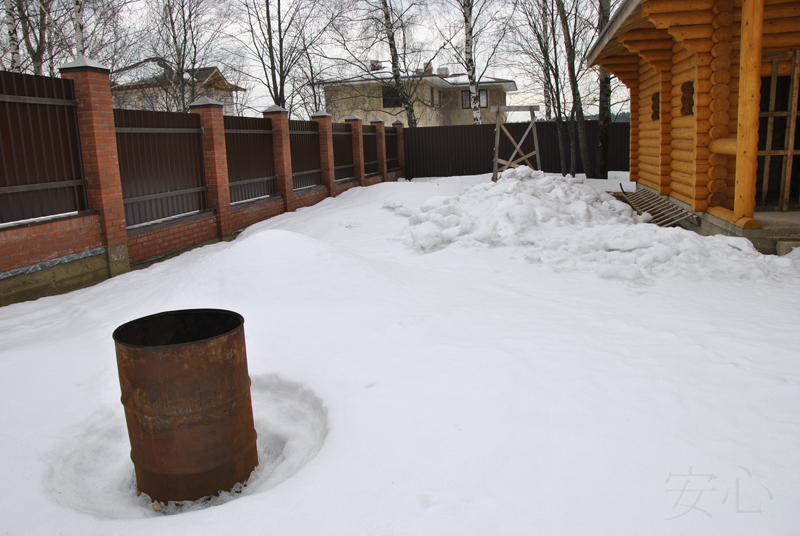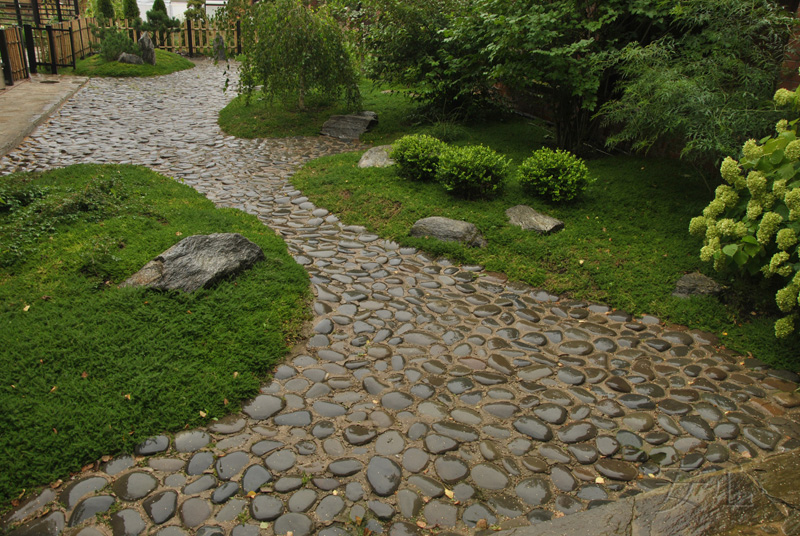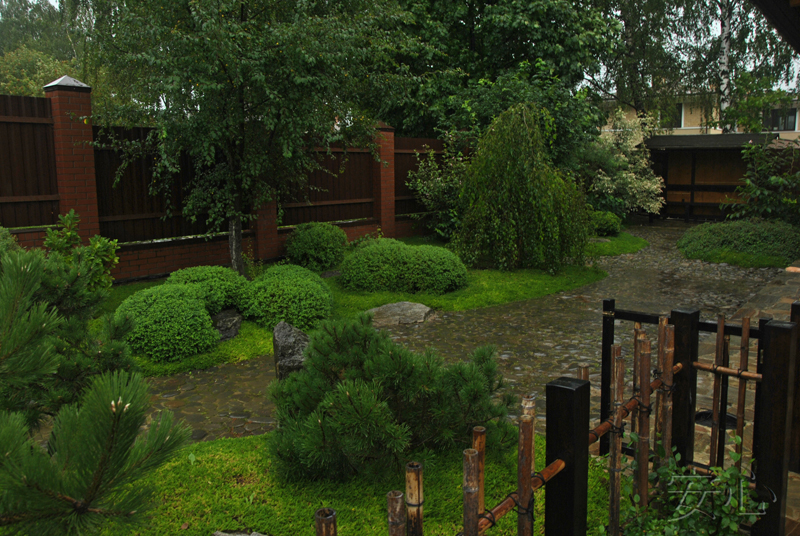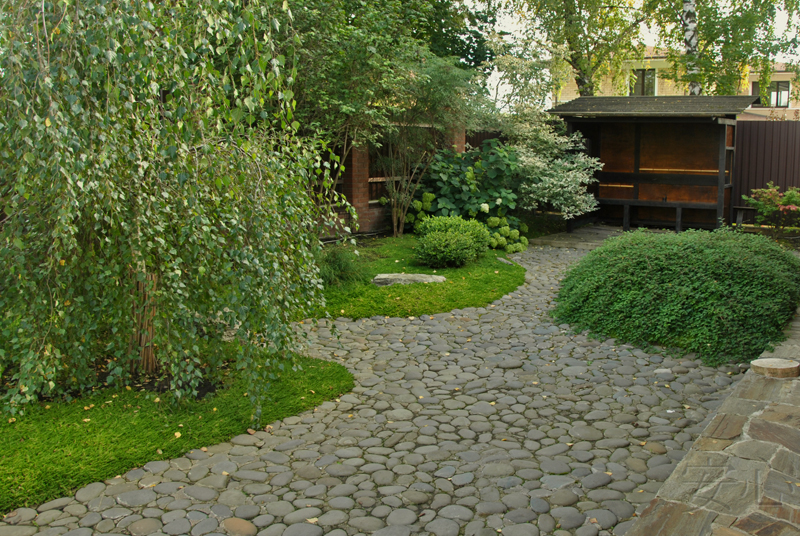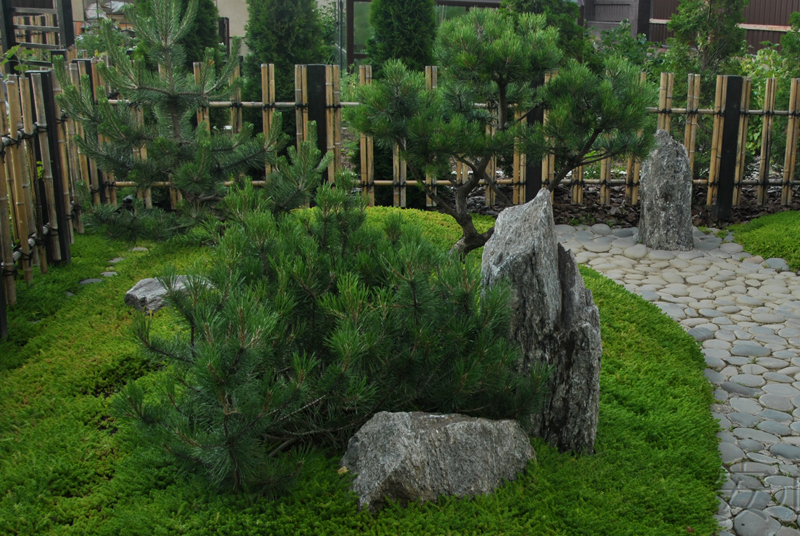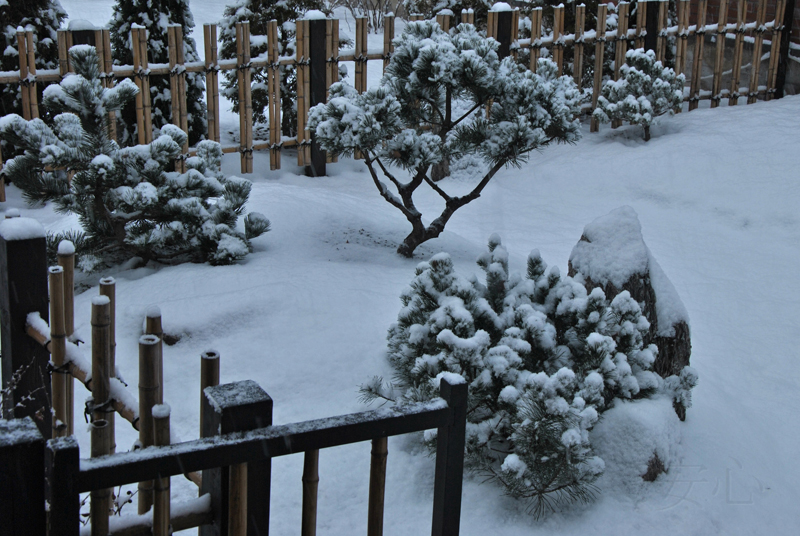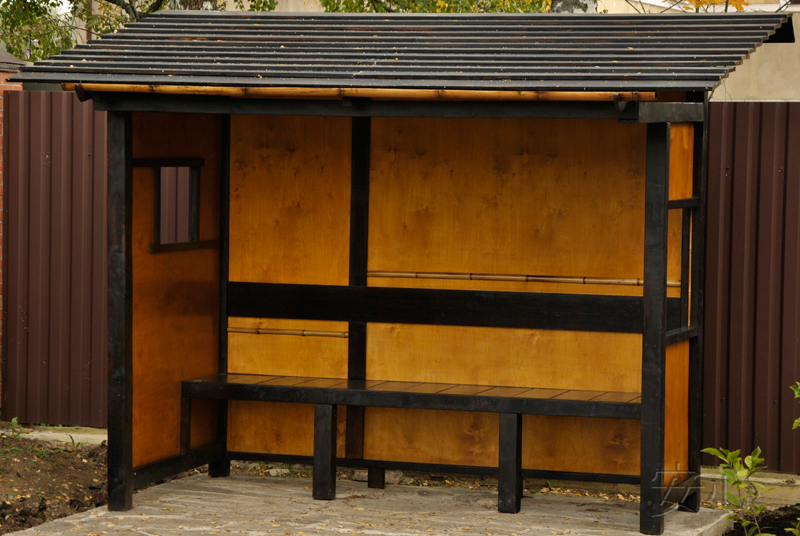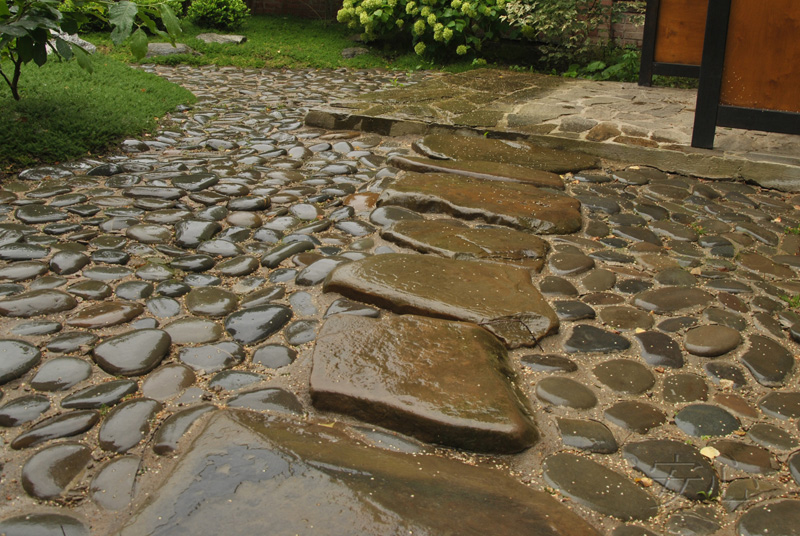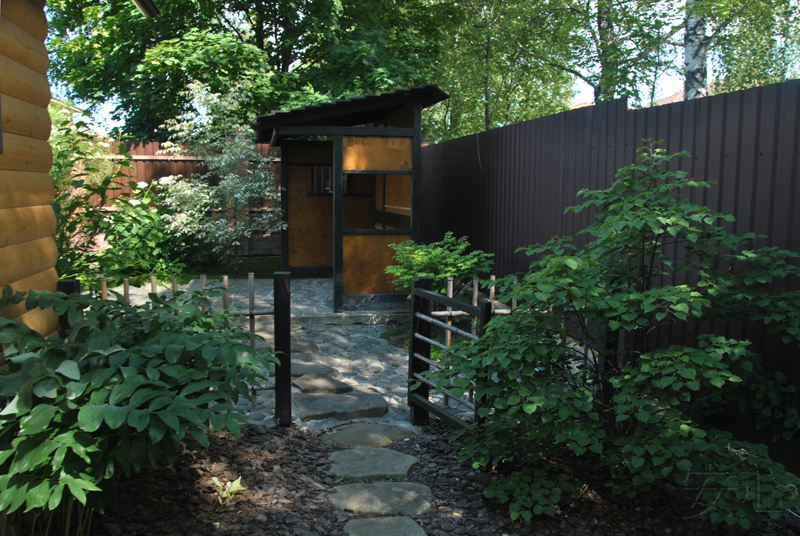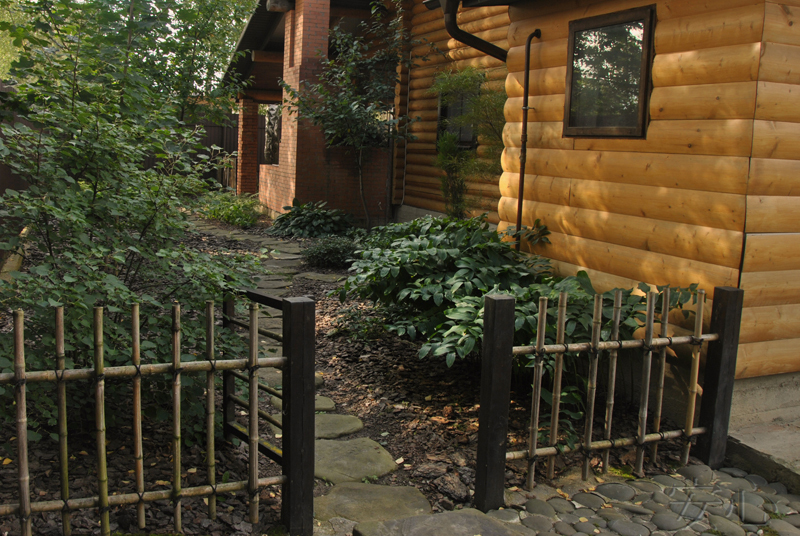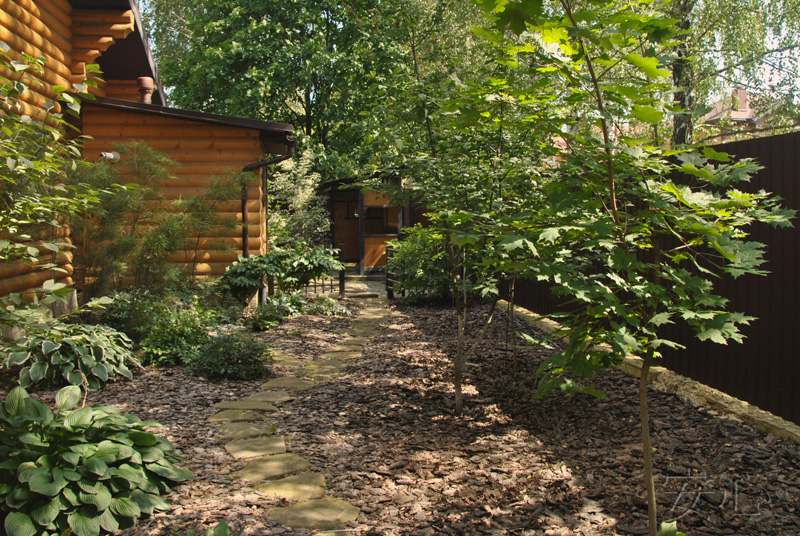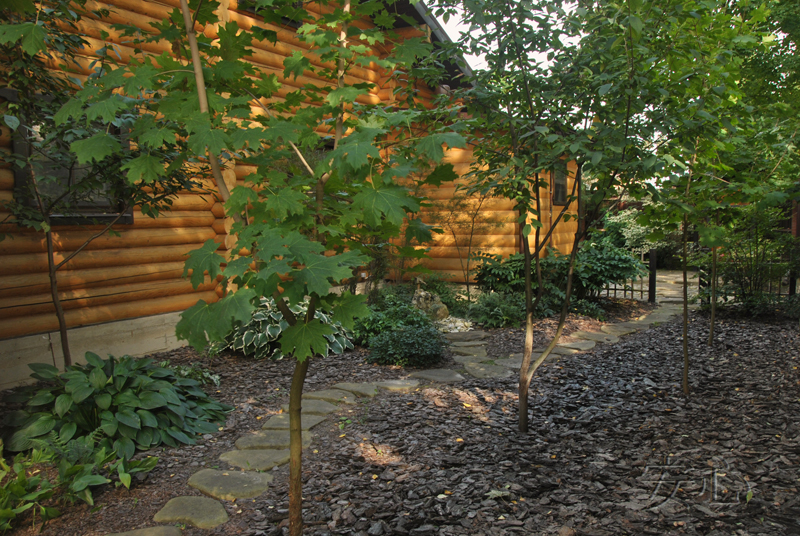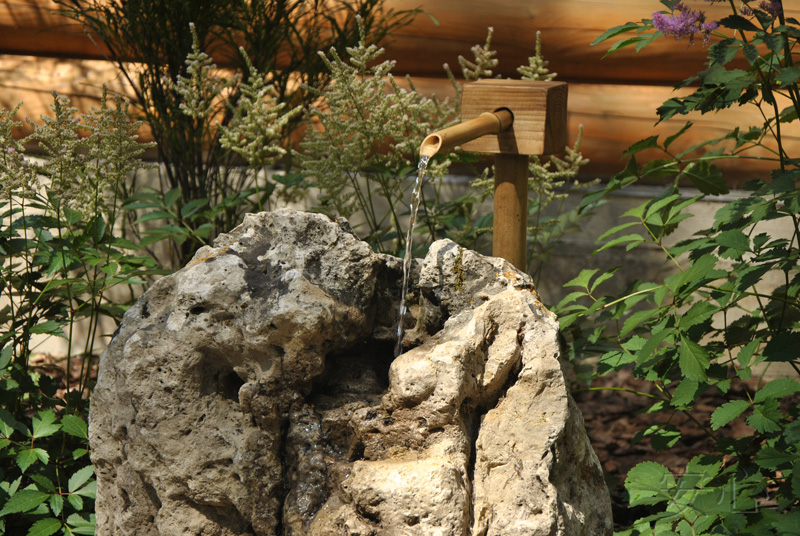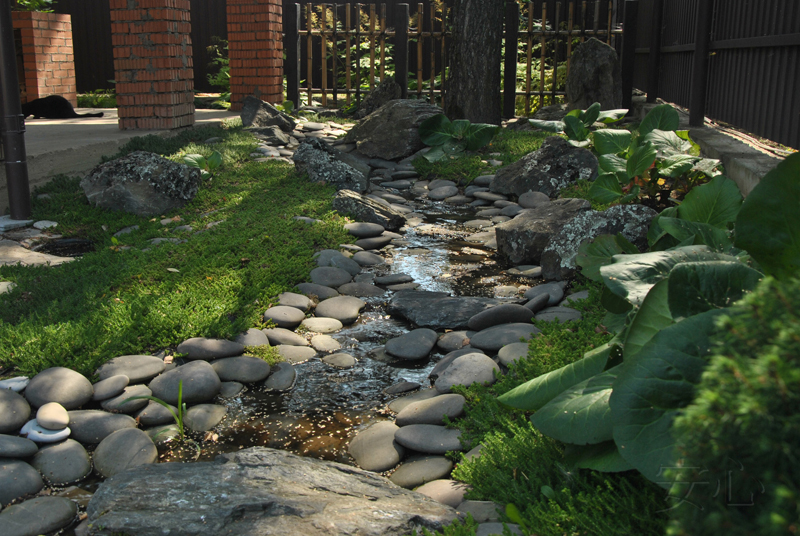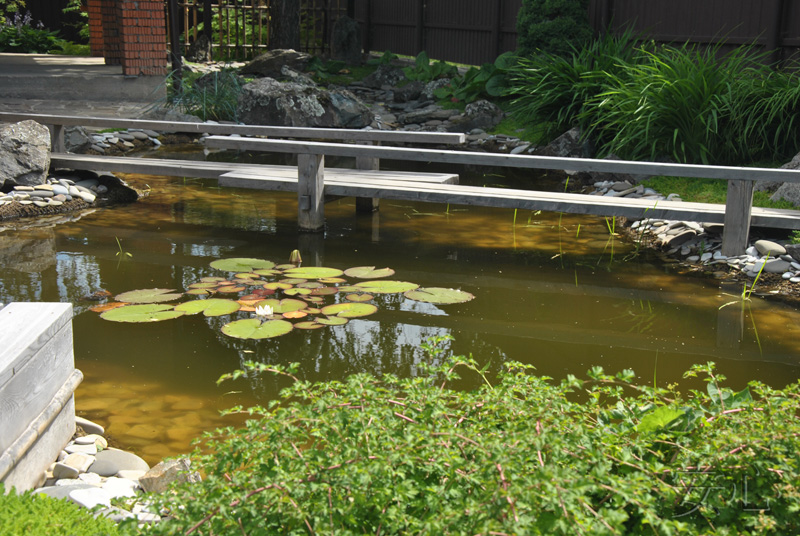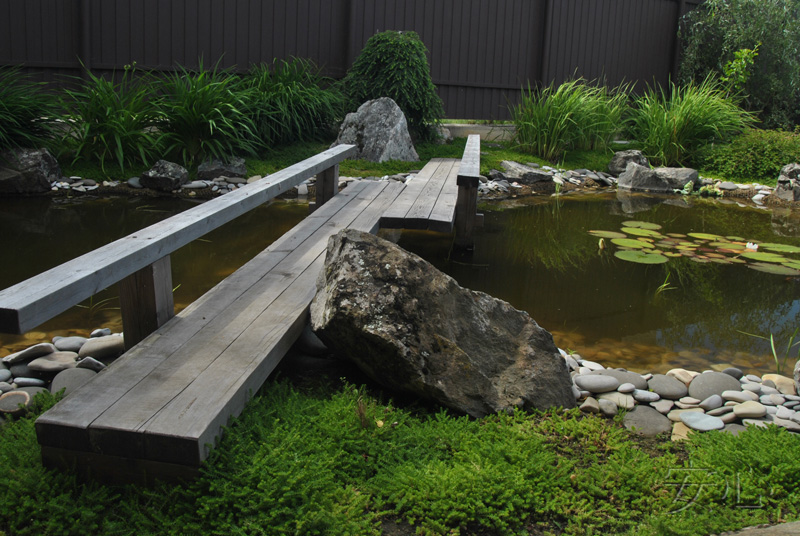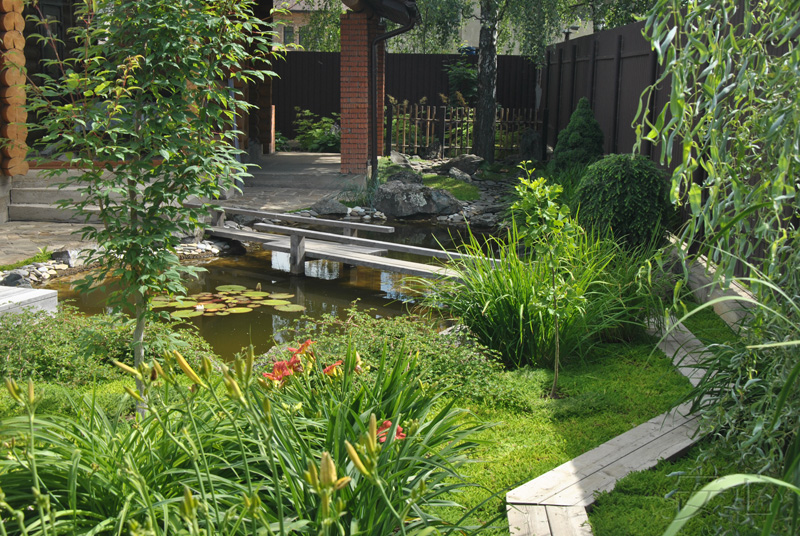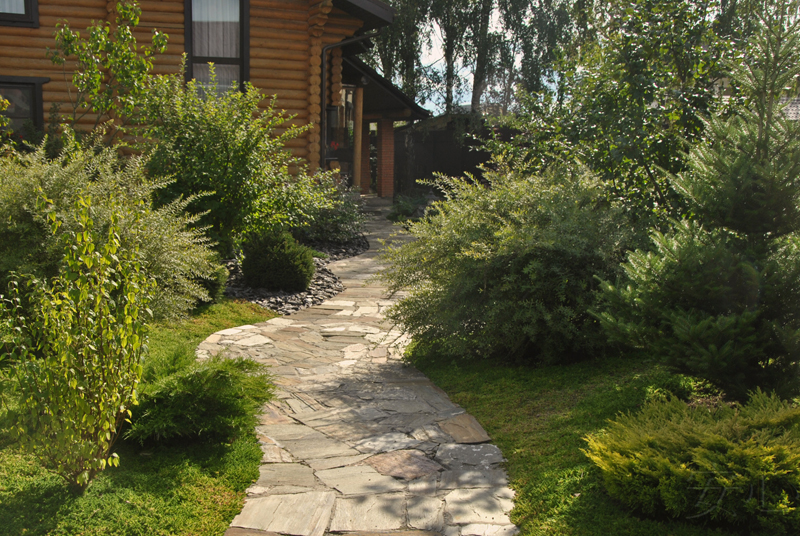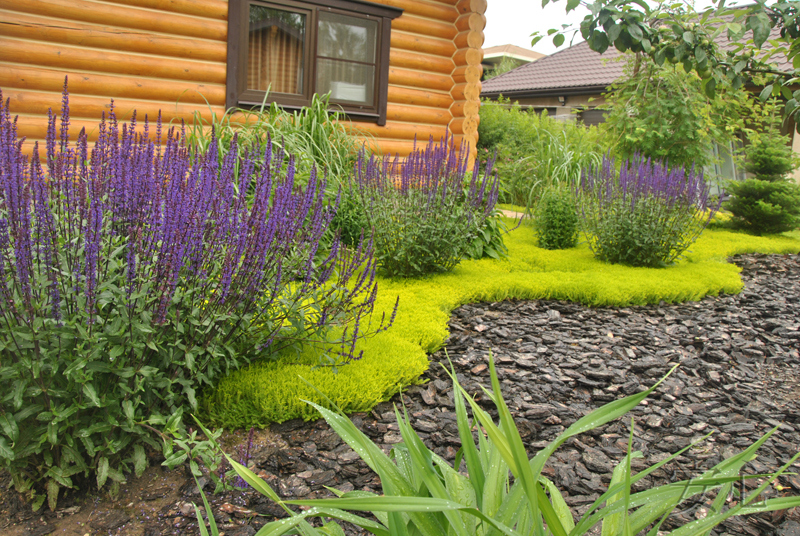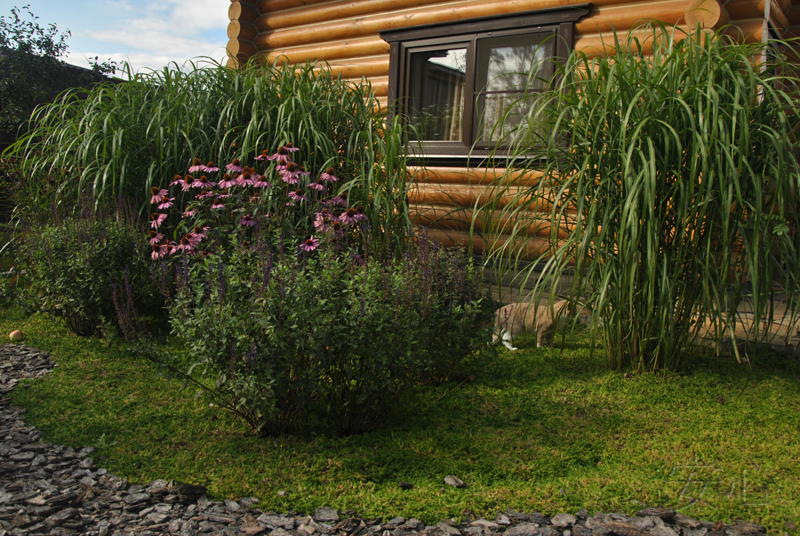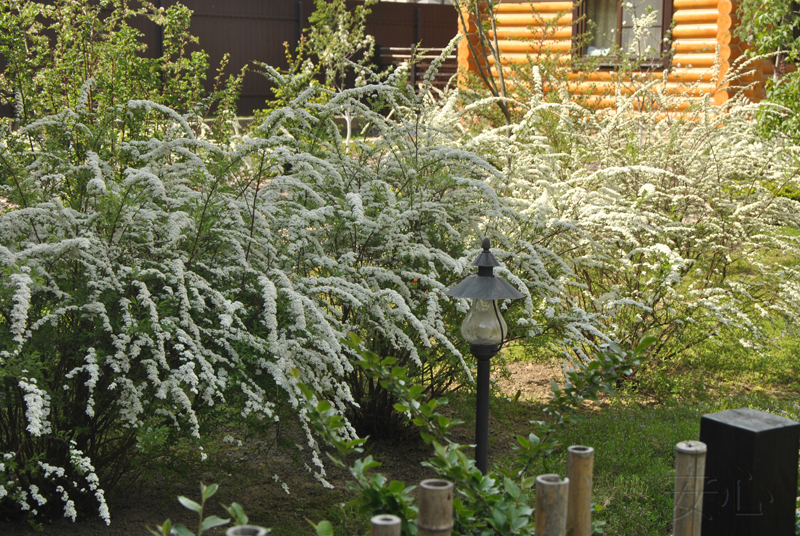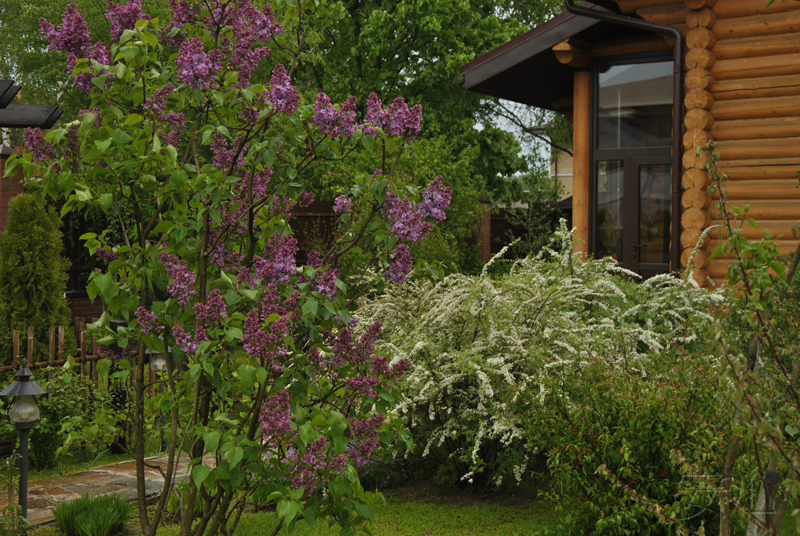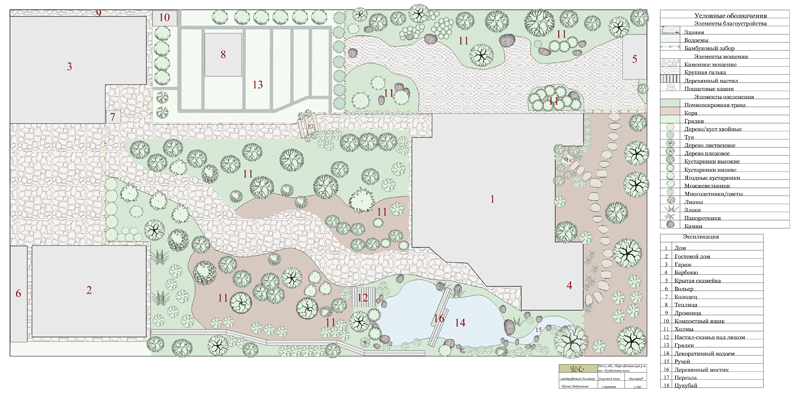
The Garden of Moods
The history of this garden began in 2011. The owner moved from another house and she planned to take some plants to the new garden. We decided to make one half of the garden in Japanese style, and in another one to plant the fruit trees and blooming bushes.
The Japanese part, in turn, consists of three parts: a dry stream with hills, a forest garden and a pond garden. All of them are separated from each other and from the fruit garden by bamboo hedges.
First we created the garden with hills and dry stream. The size of this zone is 7 by 8 meters.
Adult birches on the neighboring sites have become a big problem, creating a difficulty in caring for a dry stream. Therefore, we decided to use a concrete for the dry creek. In that case you can easily sweep the leaves with a broom.
Along the fence there is the largest hill. We planted on it some trees and bushes from the previous site: the Flamingo maple, the small-fruited plum, the birch pendula СYoungiiТ, the willow purpurea 'Nana', the Weigela and the magnolia. In the lower tier there are spiraeans Japanese and boxwood, which form hemispheres, bending around the stones.
On the second hill placed in the shade, we planted stefanandra Crispa. Now it is already so big that it covered the all hill completely.
The third hill, on the contrary, has a lot of sun. We planted on it three pines, which we form in different shapes.
In the far corner there is a covered bench machiai. The owner of the garden is very fond of sitting there, alone, and with the guests.
Stepping stones lead from the covered bench to the forest garden.
This is the smallest part of the site, which is in an openwork shadow from neighboring birches. Here grows maples, small-leaved linden, buckthorn, and also shade-loving astilba, ferns, kupens, hosts and aruncus.
Tsukubai is located in a secluded corner.
The forest garden flows smoothly into the pond garden. The boundary is a stream that flows into the pond.
On the shore of the pond there are dark-gray stones. Moss and lichen covering them create an atmosphere of peace and quiet, and the garden, thanks to them, seems much older. A bridge in Japanese style was thrown across the pond.
We deliberately did not paint the bridge, so eventually it acquired a noble gray natural color. The auxiliary path that passes through the fourth zone of the garden is also made of larch.
The fourth part of the garden is not Japanese. Here grow fruit trees, alternating with blooming bushes and coniferous. This garden blooms continuously from spring to autumn. Especially it is beautiful in the spring, when the gray spiraeans turn into white fountains.
We named this garden "the garden mood", because there are four clearly defined zones that meet one or another mood of the owner. By the way, in the process of creating this garden, we became good friends with her.
Our works
anshin©2011All rights reserved. When using the materials of the site, reference is obligatory.
Proposals for co-operation, as well as comments and suggestions on the site please send to the address: anshinsad@gmail.comtel: +7 (965) 121-80-60, 10am-20pm
